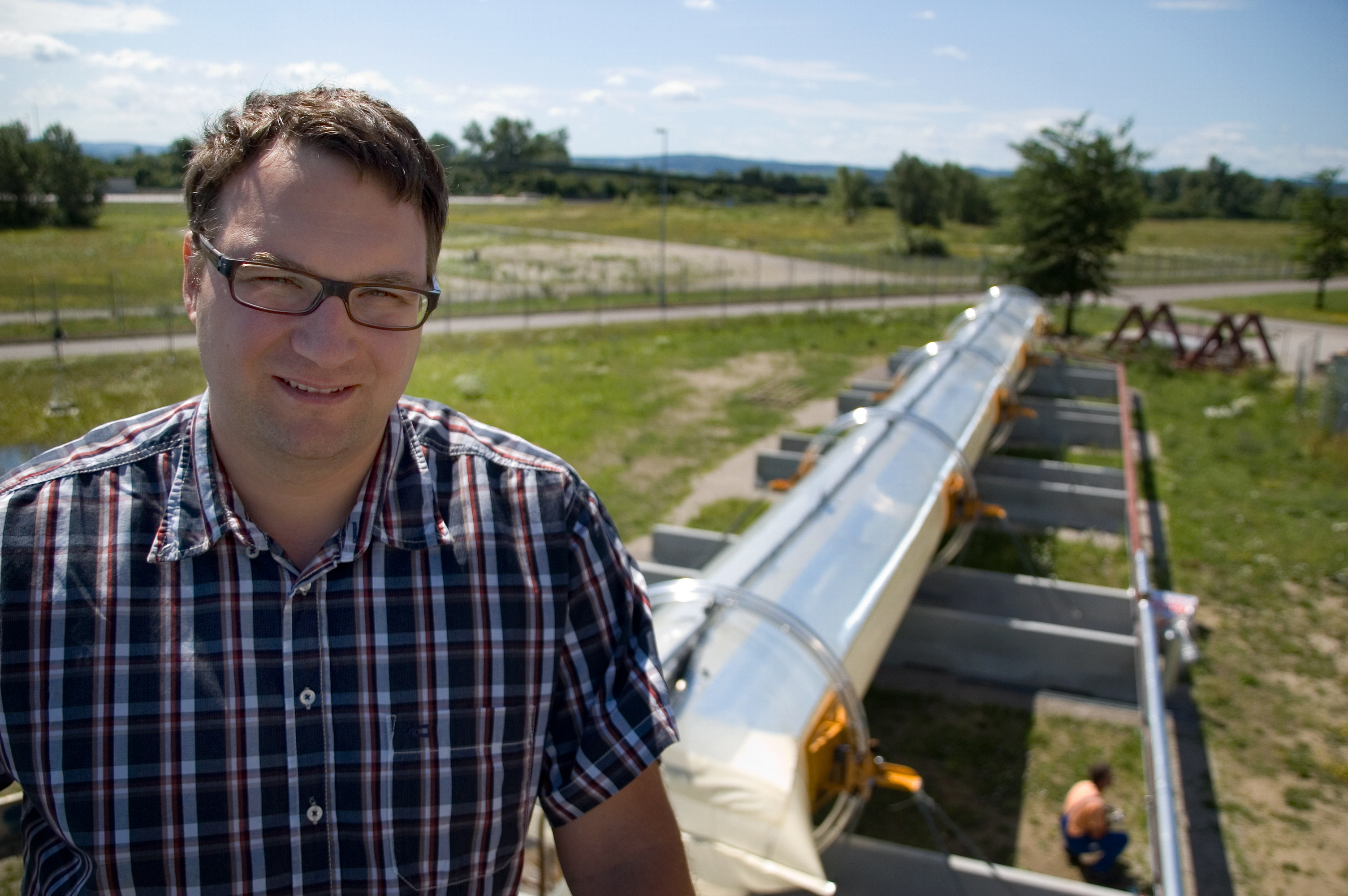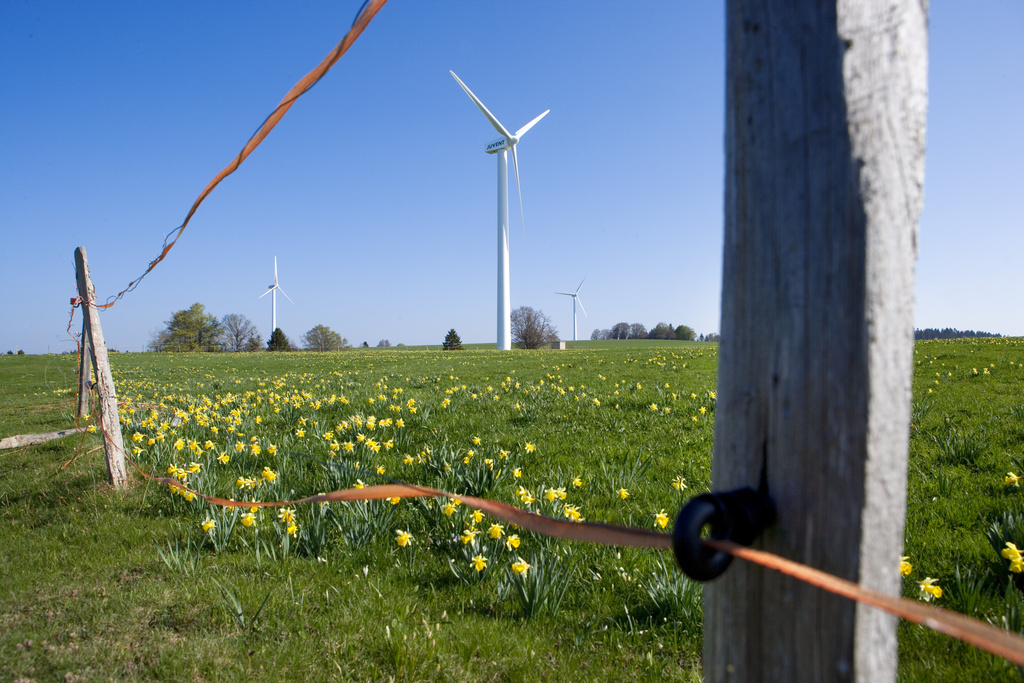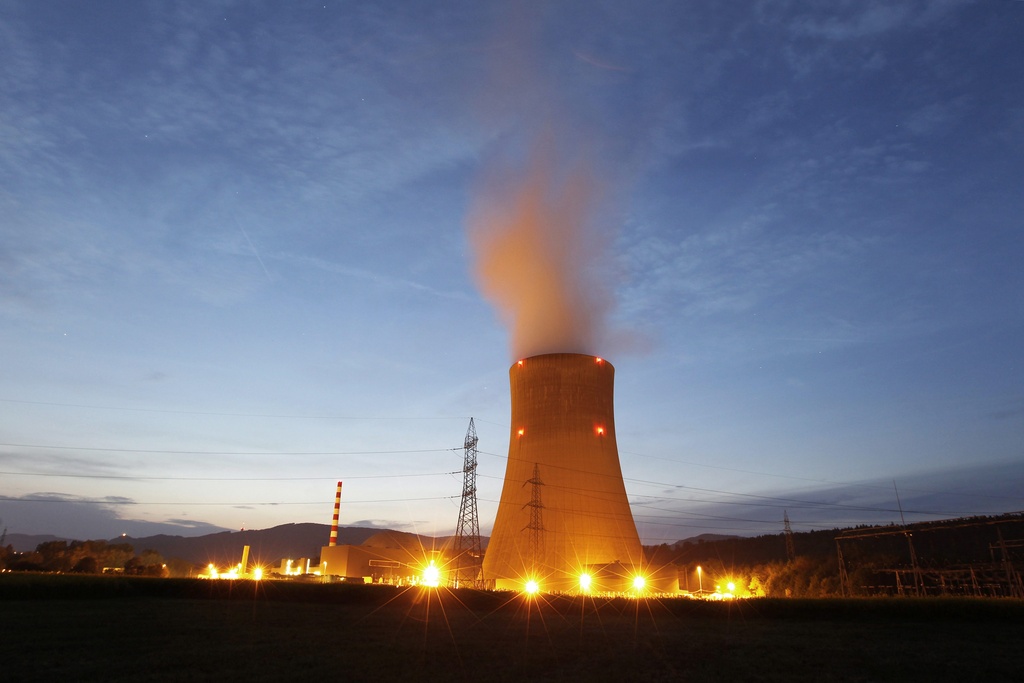Blowing-up the solar power market

Like most forms of renewable energy, solar power still loses points for cost effectiveness. Two Swiss energy pioneers hope to change that with a blow-up solution.
Felix Tiefenbacher and Samuel Kutter of Vienna-based Heliovis have seen the future and the future is sausage shaped and inflatable.
The prototype is impressive: a 35-metre long tube, two metres in diameter. The final 200-metre long device is due on the market in 2016.
The solar innovators have permission to assemble and test their device on the grounds of the Dürnrohr steam power plant near Zwentendorf in Austria. Swissinfo.ch went along for a physics lesson.
Tiefenbacher is pleased and annoyed in equal parts. On the plus side, the welded joints of the inflated tube withstood tests x- rays.
But due to the breakdown of a relay afterwards the tube deflated slightly and because it was loose a gust of wind was enough to damage the outer film.
Now the company engineers are working on making the relays fully functional again. Among them the quantum physicist from Basel explains how the so-called “Heliotube” turns the light of the sun into energy.
How it works
The tube is a long cylinder. Running through the cylinder is a reflective film which divides the space into two air-tight chambers. A small difference in pressure between the upper and lower chamber causes the reflective film to curve downwards, thus producing a trough which focuses the light.
The light first travels through a transparent, upper film, before reflecting off the curved mirror film to the focus area within the upper chamber. Thermal absorbers then use the focused light to produce steam, which can be used for industrial processes or to generate electricity.
“In this black pipe the light is absorbed and turned into heat,” Tiefenbacher explains. “Fluid is pumped through the pipe, for example water. The fluid is warmed, turned into steam which then drives a turbine which makes energy.”
Impressed
In 2007 Tiefenbacher met Austrian Johannes Höfler, who told him about his blow-up idea. The Swiss physicist knew after 20 seconds that the concept “fulfilled all the criteria of a super business idea: It has a very large market, is easy to explain and can be produced easily”.
Two years later the company Heliovis was founded in a garage with the goal of putting the patented technology into practice. Since last year the company has been operating from a combined office and workshop building in Wiener Neudorf’s industrial zone. Today 18 people are working on the project.
There is a second Swiss expert in the team, physicist Samuel Kutter, managing director of Heliovis since 2010. Previously he worked for the German energy giant E.ON.
High spec material
Over at the company base in Wiener Neudorf, technicians are in the process of blowing up another tube in front of the company building to carry out more tests. As always they are fine tuning to find the perfect material for the different films. “Our current challenge is sorting out problems with materials,” Tiefenbacher said.
The specifications for the three different films are high: They must all be UV-stable (not crack or disintegrate on exposure to the sun’s rays), scratch resistant, weather and damp resistant as well as easy to clean.
Ultimately the three films will later be produced centrally in one machine and delivered rolled together. These developments cannot be achieved overnight, which is why the firm is aiming for market entry in 2016.
Not better but cheaper
The aim of the project is not to achieve more efficient transformation of solar energy into power, just a less expensive method. “Solar power is too expensive today,” Tiefenbacher said.
By using less material the developers hope to deliver several advantages. For one thing the product will be almost one tenth of the weight of equivalent standard parabolic troughs, with lower production and installation costs.
The industry standard parabolic trough (solar collector) costs around €350 (SFr383) per square metre; the equivalent surface of Heliotube is expected to cost €90.
Desert power
The final product will be 200 metres long with a diameter of 12 metres, not to be sold in single units. Clearly this is not something to be installed in your back garden.
Clients will be large energy companies. “These sorts of power plants are not divided up into small units but are set up over large spaces,” Tiefenbacher said.
“We are talking about 50 to 100 megawatt stations. For a renewable energy plant that is big but in comparison to a nuclear power plant producing gigawatts, they are still small installations.”
The giant tubes will not be used at our rather cloudy latitude. “Every sun concentrator is an optical system where light will be focused. And for that we need the sun in the sky. A cloudy sky won’t do,” he said.
“That means the sun concentrators will be mounted in the dry regions of southern Spain or in the Sahara.”
Green sectors of the Swiss economy employ 116,000 people and generate turnover of SFr29 billion.
Between 2001 and 2009, annual growth in these sectors was 6.3% (+2.9% for the entire Swiss economy).
The largest growth was recorded in the ecological building industry (+47%), sustainable investment funds companies (+31%), renewable energy sector (+13%) and organic food industry (+6%).
By 2020, around 53,000 new jobs will be created by green companies, and generate turnover of more than SFr57 billion.
(source: “Green Markets in Switzerland – Perspectives for the economy and employment”, a study conducted by the Evaluanda institute of Geneva, and commissioned by WWF Switzerland)
(Translated from German by Clare O’Dea)

In compliance with the JTI standards
More: SWI swissinfo.ch certified by the Journalism Trust Initiative












You can find an overview of ongoing debates with our journalists here . Please join us!
If you want to start a conversation about a topic raised in this article or want to report factual errors, email us at english@swissinfo.ch.